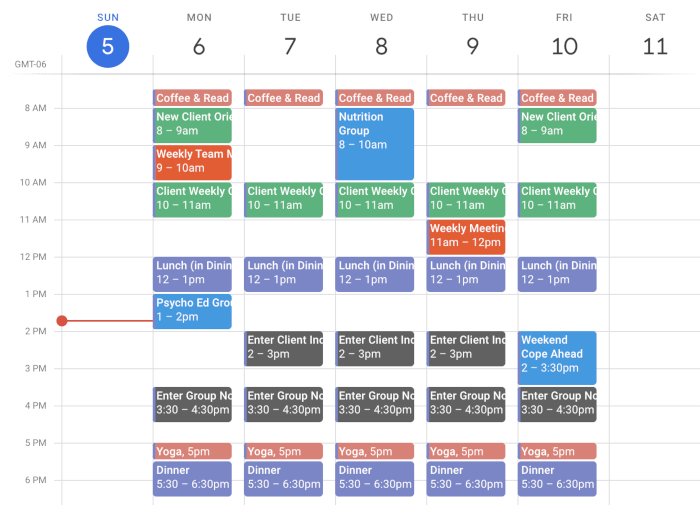—
Picture this: Your team just wrapped up a “quick” 30-minute standup that somehow stretched to 45 minutes. Before you can even process the discussion, three more meeting invites land in your inbox. Sound familiar? If you’re nodding along, you’re not alone. The average knowledge worker spends 23 hours per week in meetings, and remote teams often fall into the trap of over-communicating through video calls to maintain connection.
But what if there was a better way? What if you could slash your meeting time by 70% while actually improving team alignment? That’s the power of asynchronous communication — a game-changing approach that’s helping modern teams work smarter, not harder.
The shift toward async-first workflows isn’t just about scheduling convenience. It’s about creating a sustainable work environment where deep work thrives, global teams collaborate seamlessly, and burnout becomes a thing of the past. Ready to transform how your team communicates? Let’s dive into the strategies that are revolutionizing remote work culture.
What is asynchronous communication and why remote teams need it
Asynchronous communication happens when team members exchange information without requiring everyone to be present at the same time. Think of it as the difference between a phone call (synchronous) and an email (asynchronous). While synchronous communication demands immediate responses, async communication allows people to contribute when they’re most productive and focused.
Remote teams desperately need this approach because traditional office assumptions simply don’t work in distributed environments. When your developers are in Eastern Europe, your designers are in California, and your project managers are in Singapore, finding a meeting time that works for everyone becomes a logistical nightmare.
But the benefits extend far beyond timezone convenience. Asynchronous communication creates a natural documentation trail, reduces interruptions, and gives introverted team members more time to formulate thoughtful responses. It also levels the playing field for non-native speakers who might struggle with rapid-fire verbal exchanges but excel at written communication.
The magic happens when teams realize that most “urgent” discussions aren’t actually urgent. That brainstorming session could be a collaborative document. That status update could be a quick video recording. That decision-making meeting could be a structured async process with clear deadlines and stakeholder input.
The hidden cost of meeting overload in modern workplaces
Meeting overload isn’t just annoying — it’s actively destroying productivity and employee wellbeing. Research shows that excessive meetings lead to decision fatigue, reduced creativity, and increased stress levels. When your calendar looks like a game of Tetris, there’s no room for the deep, focused work that actually moves projects forward.
The financial impact is staggering. A single one-hour meeting with eight participants doesn’t cost one hour — it costs eight hours of collective time. Multiply that across hundreds of meetings per month, and you’re looking at thousands of lost productivity hours. For a mid-sized company, this translates to hundreds of thousands of dollars in wasted resources annually.
Remote teams face additional challenges. Zoom fatigue is real, and the cognitive load of constant video calls is significantly higher than in-person interactions. Your brain works overtime to process visual cues, audio delays, and the unnatural experience of staring at multiple faces simultaneously.
Even worse, meeting-heavy cultures create a false sense of productivity. Teams confuse being busy with being effective. They mistake talking about work for actually doing work. This leads to a vicious cycle where more meetings are scheduled to address the lack of progress caused by… having too many meetings.
The solution isn’t to eliminate meetings entirely, but to be incredibly intentional about when synchronous communication is truly necessary. Most meetings can be replaced with async alternatives that achieve the same goals more efficiently.
How to implement asynchronous communication tools that actually work
The key to successful async communication lies in choosing the right tools and using them strategically. Your tech stack should support three core functions: information sharing, collaboration, and decision-making. Each tool should have a clear purpose and defined usage guidelines.
Slack or Microsoft Teams work well for quick updates and informal conversations, but they can become overwhelming without proper channel organization. Create specific channels for different projects, departments, and purposes. Use threading religiously to keep conversations organized, and establish “office hours” when team members are expected to be responsive.
Loom or Vidyard are game-changers for complex explanations. A five-minute screen recording can replace a 30-minute meeting and provide better context than lengthy written explanations. Team members can watch at their own pace, pause to take notes, and revisit sections as needed.
Notion, Confluence, or similar documentation platforms become your single source of truth. This is where project requirements, meeting notes, and important decisions live. The key is making information easily searchable and maintaining consistent formatting standards.
Asana, Monday.com, or Trello handle task management and project tracking. These tools provide transparency into who’s working on what without requiring constant status meetings. Use them to set clear expectations, deadlines, and dependencies.
The secret sauce is integration. Your tools should work together seamlessly, reducing the cognitive load of switching between platforms. Establish clear protocols for which tool to use in different scenarios, and train your team thoroughly on best practices.
Building async workflows that keep teams aligned without constant check-ins
Effective async workflows require more structure than traditional office communication, but the upfront investment pays dividends in reduced meetings and improved clarity. Start by mapping your current processes and identifying synchronous bottlenecks.
– Daily standups become daily written updates
Replace morning meetings with structured written check-ins. Team members share what they accomplished yesterday, what they’re working on today, and any blockers they’re facing. This creates a searchable record of progress and identifies issues before they become critical.
– Weekly planning sessions become collaborative documents
Transform planning meetings into shared documents where team members add agenda items, proposed solutions, and decisions throughout the week. By the time you meet (if you need to meet at all), 80% of the work is already done.
– Project kickoffs become comprehensive briefs
Instead of lengthy kickoff meetings, create detailed project briefs that cover objectives, timelines, roles, and success metrics. Team members can review the information thoroughly and ask clarifying questions asynchronously.
– Code reviews and design feedback become structured processes
Implement standardized templates for reviews that guide feedback and ensure consistency. This reduces back-and-forth communication and helps team members provide more actionable input.
The key is creating predictable rhythms. Team members should know when to expect updates, how to request feedback, and what information needs to be shared with whom. This predictability reduces anxiety and eliminates the need for constant check-ins.
Overcoming the biggest challenges when switching to asynchronous work
Transitioning to async-first communication isn’t without obstacles. The most common challenge is manager anxiety about losing control or visibility into team productivity. Many managers equate seeing their team in meetings with effective leadership, when the opposite is often true.
Address this by focusing on outcomes rather than activity. Implement clear metrics for project progress, quality standards, and team satisfaction. Show managers how async communication actually increases transparency through better documentation and tracking.
Team resistance is another hurdle. Some team members worry that async communication will make them feel isolated or out of the loop. Combat this by maintaining regular (but less frequent) social interactions and creating async rituals that build connection.
Cultural barriers can be significant, especially in organizations with hierarchical structures or face-to-face traditions. Start small with pilot projects and demonstrate success before rolling out company-wide changes. Share success stories and concrete productivity improvements.
Decision-making delays concern many teams. Won’t async communication slow down important decisions? Actually, the opposite is true when you implement structured decision-making processes. Create templates that outline the decision to be made, relevant stakeholders, deadlines, and criteria for moving forward.
Time zone coordination requires careful planning. Establish core overlap hours for urgent matters and create handoff procedures for work that spans multiple time zones. Use async communication to your advantage by maintaining 24-hour productivity cycles.
Measuring success: How to track productivity gains from async communication
You can’t improve what you don’t measure, and demonstrating the ROI of asynchronous communication is crucial for long-term adoption. Start by establishing baseline metrics before implementing changes, then track improvements over time.
Meeting reduction is the most obvious metric. Count the number of meetings per week, average meeting duration, and total time spent in meetings. A 70% reduction might sound aggressive, but many teams achieve this within 6-12 months of implementing async-first practices.
Response time improvements often surprise teams. While async communication doesn’t require immediate responses, it often leads to faster overall project completion because team members can work during their most productive hours without interruption.
Quality metrics matter more than speed. Track error rates, revision cycles, and stakeholder satisfaction. Many teams find that async communication leads to more thoughtful decision-making and higher-quality outputs because people have time to consider their responses.
Employee satisfaction surveys provide crucial insights into team wellbeing. Measure stress levels, work-life balance satisfaction, and perceived productivity. Teams that successfully implement async communication typically report higher job satisfaction and lower burnout rates.
Project completion rates and deadline adherence often improve with async communication because teams can maintain momentum across time zones and avoid the stop-and-start nature of meeting-dependent workflows.
Track these metrics monthly and share results with stakeholders. Celebrate wins and adjust strategies based on data. Remember that the transition takes time, and some metrics might temporarily decrease before improving.
Real companies that transformed their culture with asynchronous communication strategies
GitLab leads the async revolution with over 1,300 employees across 65 countries. Their handbook contains detailed processes for everything from hiring to product development, all designed around async-first principles. They’ve reduced synchronous meetings by 80% while maintaining rapid growth and high employee satisfaction.
Zapier built their entire company culture around async communication from day one. With team members in 40+ countries, they’ve never had a physical office. Their secret? Detailed written processes, regular async check-ins, and a strong emphasis on documentation. They’ve proven that async communication scales effectively from startup to enterprise.
Buffer transformed their meeting culture by implementing “async weeks” where no meetings were scheduled. The experiment was so successful that they permanently reduced meeting frequency by 65%. Team members report higher productivity and better work-life balance.
Automattic (the company behind WordPress) operates with 1,700+ employees across 95 countries, all working asynchronously. They use internal blogs, P2 themes, and structured communication to maintain alignment. Their approach proves that even creative, collaborative work can thrive in async environments.
Basecamp pioneered many async communication practices that other companies now adopt. Their approach to “calm” work emphasizes deep focus over constant communication. They’ve maintained this culture for over two decades while building successful products.
These companies share common traits: clear documentation standards, structured decision-making processes, regular but infrequent synchronous touch-points, and leadership commitment to async-first principles. Their success demonstrates that async communication isn’t just possible — it’s often superior to traditional approaches.
Creating sustainable async habits that prevent communication burnout
The goal of asynchronous communication is to reduce stress, not create new forms of burnout. Unfortunately, some teams swing too far in the async direction, creating information overload and response pressure that defeats the purpose.
Set clear expectations about response times. Not everything needs an immediate reply, but team members should know when responses are expected. Create different urgency levels: immediate (within 2 hours), same-day (within 8 hours), and standard (within 24-48 hours).
Establish communication boundaries to protect focus time. Implement “deep work” blocks where team members aren’t expected to monitor communication channels. Use status indicators and calendar blocking to signal availability.
Create async rituals that build team connection without requiring synchronous presence. Weekly wins celebrations, monthly team spotlights, and quarterly goal-sharing sessions can happen asynchronously while maintaining team culture.
Implement “communication fasting” periods where non-urgent communication is paused. Some teams designate Fridays as “no-communication days” for deep work and project completion.
Regular async audits help identify communication bloat. Monthly reviews of channel activity, message volume, and response patterns can reveal when async communication is becoming counterproductive.
Train teams on effective async communication skills. Writing clear, actionable messages is different from verbal communication. Invest in training that helps team members communicate more effectively in written formats.
The key is intentionality. Every communication should have a clear purpose, appropriate urgency level, and expected outcome. When team members understand these principles, async communication becomes a productivity superpower rather than another source of stress.
Making the shift to asynchronous communication isn’t just about cutting meetings — it’s about creating a more humane, productive, and sustainable way of working. When implemented thoughtfully, async-first approaches give teams the freedom to do their best work while maintaining the alignment and collaboration that drives business success.
The companies leading this transformation aren’t just saving time; they’re building cultures that attract top talent, reduce burnout, and deliver better results. They’ve proven that you don’t need to sacrifice quality or connection to work asynchronously.
Start small. Pick one meeting that could become an async process. Experiment with written standups. Try recording a Loom video instead of scheduling a call. These small changes build momentum and demonstrate value to skeptical team members.
Remember, the goal isn’t to eliminate all human interaction — it’s to make every interaction intentional and valuable. When you master asynchronous communication, you’ll wonder how you ever got anything done in those endless meeting marathons. Your future, more productive self will thank you.



